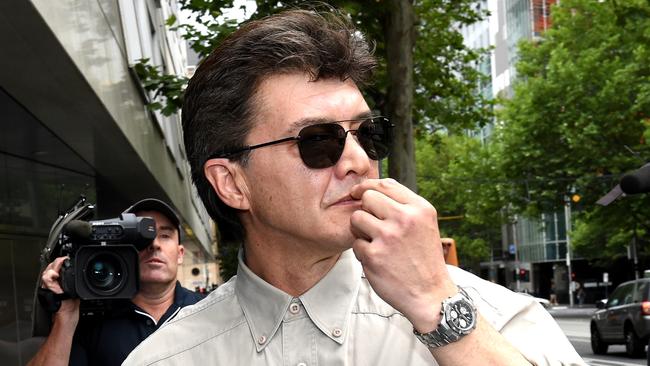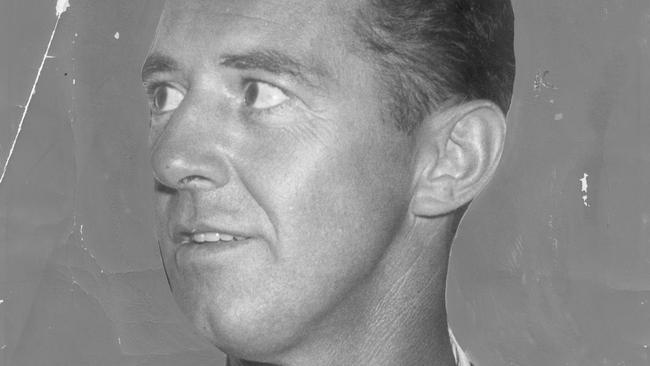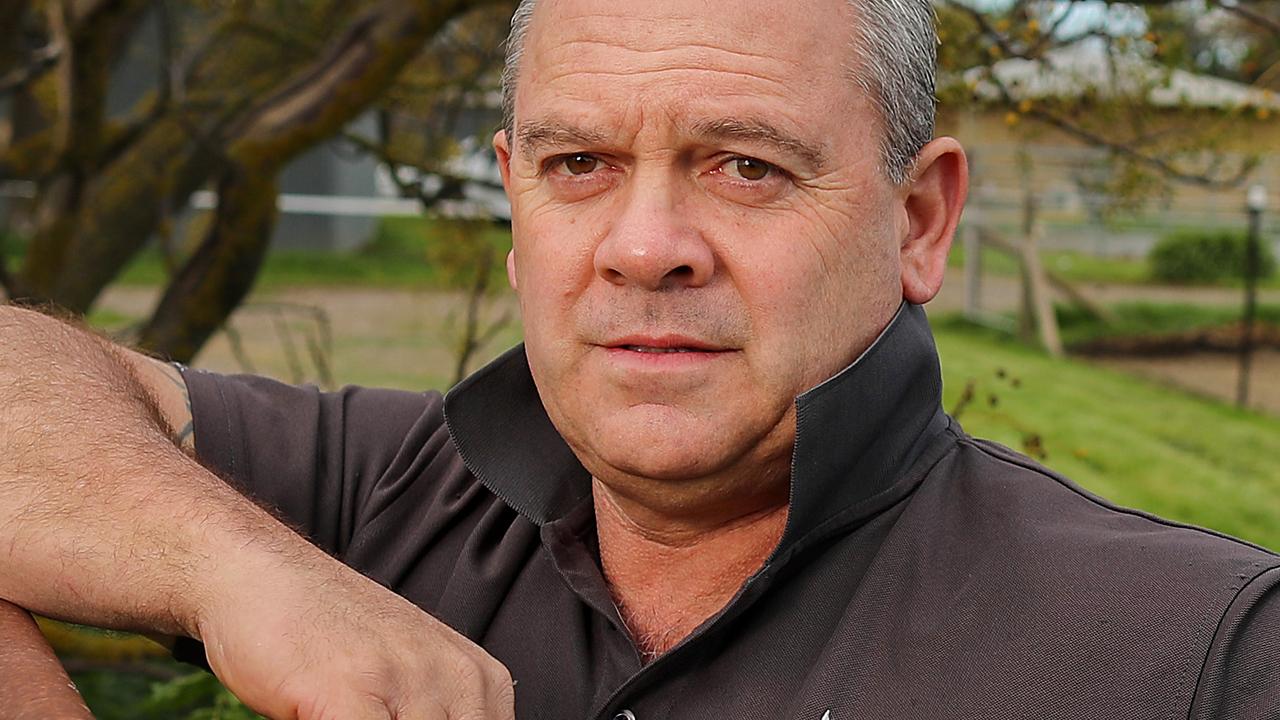Even the hardest criminals can take a step on the road to redemption
IT may not be an easy path to tread but sometimes even the hardest criminals take a step on the road to redemption, writes Andrew Rule.

Andrew Rule
Don't miss out on the headlines from Andrew Rule. Followed categories will be added to My News.
WE can’t publish the name of the convicted Brisbane drug dealer whose nice little earner coaching soccer at a Melbourne private school has been shot down by a judge who says he shouldn’t be teaching kids.
The reason claimed for the suppression is that Mr Breaking Bad-turned-soccer dad has a former wife, a current partner and children who might be “embarrassed” that he was sentenced to several years’ jail in 2012.
This makes quite a precedent for everyone who faces court. What’s next? A bikie hitman gets to be anonymous because his granny doesn’t want any gossip at the old folks’ home?
What’s really embarrassing is that our junior soccer coach served barely two years in the clink before getting out and heading to Victoria — where he landed the job at the school, which can’t be named, either. Obviously, he must have been a model prisoner, remorseful for his part in trafficking 40kg of amphetamines and 4000 ecstasy tablets. He would also regret attacking a woman he punched in the head three times in 2002. Not to mention punching a security guard who caught him shoplifting. Then there’s his suspended jail sentence for growing cannabis. No wonder he’s embarrassed.
If Mr Breaking Bad really has turned over a new leaf, as his QC told the Supreme Court recently, he wouldn’t be the first. Call it Breaking Good. A guilty conscience has caught up with a would-be crook turned star witness at the centre of another current trial — that of a Chilean-born character named Wladimir Babaeff, charged with a brazen heist of $500,000 at Myer’s city store in 1993.
The witness was apparently an “inside man” who got robber’s remorse when he found out that armed robberies involved guns. His story, and he’s sticking to it, is that he was shocked when his fellow conspirator (allegedly Mr Babaeff) turned up armed with a pistol (and disguised as a security guard) to disarm and handcuff the real guard minding the Myer strong room.
The armed robber made off with the cash and the inside man lived with his conscience until 2014, when he told police his story — which will be of great interest to some of Mr Babaeff’s martial-artist friends.
Another interesting thing about the case is that Mr Babaeff is free on bail — and is a helicopter pilot by trade. Presumably one of his bail conditions is to avoid aerodromes because if he got back to South America, he might be hard to find.
Take the case of the charming Italian-born chap whose passport says he is Antonio Crisci — one of the biggest names in food and wine in New Zealand, where he has set up three fashionable restaurants and a sumptuous island vineyard since arriving on a yacht 26 years ago.

Within a decade or so, Crisci became as well known in his adopted home as, say, Ronnie di Stasio or Guy Grossi or Frank Camorra are in Melbourne. Everyone from All Blacks to film stars like Tommy Lee Jones eat and drink at Crisci’s Italian eatery and bar, Non Solo Pizza, in trendy inner-city Parnell.
Crisci was (and is) a great migrant success story. He married one of his managers, Vivienne Farnell, and had two children. They travelled the world — or parts of it — to enjoy the good life and bring back new ideas.
The funny thing was that Crisci’s travel schedule never included the US. That was until mid-2011, when a volcano erupted in Chile, causing an ash cloud that forced his flight to be diverted to Los Angeles. When the plane landed at LA International Airport, our hero’s fingerprints were scanned and guess what? It turns out that restaurateur, foodie, winemaker and loving family man Antonio Crisci had forgotten he was actually Mario Starace, born in Naples and wanted in the US since the mid-1980s over a mafia drug deal gone wrong.
The authorities produced court papers outlining the case against Starace, alleging that in 1987 he was in a New York hotel room with 500g of heroin while a mafia hood waited outside with $103,500. In the circumstances, he had been lucky that heroin trafficking charges were dropped — instead, he was charged with manipulating bank transactions to cover up alleged drug money.
No arrest warrant was issued until 1988, by which time Starace had vanished, presumably getting to Europe. He sailed into New Zealand in 1991 to start his new life.
So what happened? After a little jail time in California, he was bailed with the help of friends in New Zealand, including All Black Andy Haden, then served several months’ “home detention” in New York as a charity kitchen volunteer before returning to New Zealand a very relieved man. He had found out the hard way that redemption doesn’t stop your sins coming home to roost.
Some would say the same thing happened with Australia’s most intriguing jail escaper, Russell “Mad Dog” Cox, who was neither mad nor legally called Russell Cox. Born Melville Schnitzerling to poor but honest parents in rural Queensland in 1949, the boy named “Tim” ended up in brutal boys’ homes that turned him into a ruthless and cunning armed robber and serial jail breaker.
Cox, as he was known, was on the run for 11 years with his long-time partner (later wife), Eva Dean, and black labrador Devil. During that time he allegedly shot dead a former accomplice, Ian Revell Carroll, at Mt Eliza in 1983 and covertly bought a small farm in Schnitzerling Rd in the district his pioneer ancestors had settled in Queensland. But after he was finally cornered in a shootout at Doncaster Shoppingtown in 1988, while setting up an armed robbery, Cox rehabilitated himself with the same dedication that he had shown to being a fugitive.
He was sentenced to 29 years but was paroled from Grafton Prison after 16 when even his jailers vouched he was a changed man. He wed the patient Eva Dean and, since his parole in 2004, has apparently been a model citizen.

Cox was always more intelligent and independent than the average crook. He was a loyal ally, a deadly enemy and a loner like the late Billy “The Texan” Longley, who settled down to a peaceful retirement after carving a lethal reputation during the “painters and dockers war” of the 1960s and 1970s.
Longley was reputed to be the last to see more than a dozen rivals who vanished during the waterside power struggle. But after being released from prison in 1988, he returned to one of his great loves: dancing. Strictly ballroom, of course.
Being a gentleman at all times, when asked if it was a gun in his pocket, Longley would be able to answer unblushingly that it might well be. But that’s where it stayed.
“The Texan” would never be guilty of inappropriate behaviour on the dancefloor. He was a straight shooter to the end.



